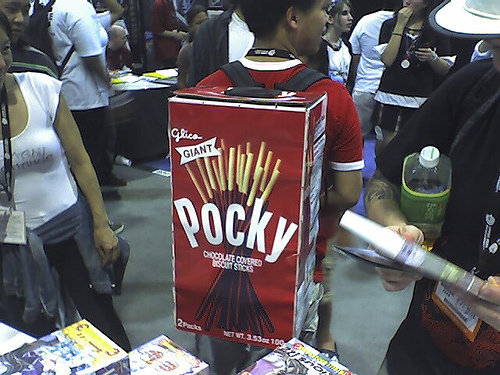It’s that time of year again: the crowds have gone home, the D.C. Comics banners have been pulled down, and the giant inflatable Pikachu has been deflated. The San Diego Comicon has come to an end, and we’re all so tired, we feel like we’ve climbed Mt. Fuji. There is nothing like this convention anywhere in the world: a sprawling room that’s easily ten times the size of Echo Base on Hoth, filled with all manner of geek culture, and there were well over 100,000 attendees this year. We had a great show, shook a lot of hands and sold a lot of Totoro T-shirts. If you came by to say hi, thanks!
In addition to greeting fans and talking about the wacky things from Japan we carry on the J-List website, I completed a lot of purchases for customers. Two T-shirts here, three packs of Black Black there, and did you want all three of the X-Change games? I had to do a lot of calculation in my head, which can really be challenging, since I’m not very good at doing math on the fly. The general consensus among Japanese I’ve talked to is that Americans usually aren’t very good at math, and in my case this is certainly true. While trying to figure the total for some loose socks and Domo-kun toys I found myself envying my Japanese wife, who always seems able to do complex calculations in her mind with perfect accuracy. Part of the reason she can calculate so quickly is no doubt due to her years learning the soroban, or abacus, a complex system of beads that makes all kinds of addition and multiplication a snap. My wife has the equivalent of a “black belt” with the device, and can actually do calculations on an “air abacus,” moving her fingers in mid-air and imagining where the beads would be to get the total. Sadly, it seems that abacus skills are slowly falling by the wayside in the current generation, as fewer and fewer kids are going to the special juku schools to learn how to use an abacus.
Communicating with people from a different country can involve making use of communication strategies to get your point across. These strategies take many forms, from hand signals to indicate an item on a menu to using non-sequitors to feign comprehension at times to keep the flow of a conversation from grinding to a halt — I’ve actually done this while getting sloshed with British friends in Japan when I couldn’t quite tell what they were talking about. I have a gaijin friend who’s a full professor at a Japanese university, and he actively avoids using proper keigo, or formal polite Japanese, going out of his way to make some mistakes in his speech when talking with the other professors. The reason, he says, is to keep the staff of his university from knowing how fluent his Japanese is, since they might pile unwanted translation work on him if they knew of his linguistic abilities. Plus he wants to remain humble and raise up his Japanese colleagues: although he could pass level 1 of the Japanese Language Proficiency Test, the primary test for students of the language, he avoids taking this step, since most of the professors he works with haven’t passed their level 1 of the “Eiken” test (the corresponding test for English).
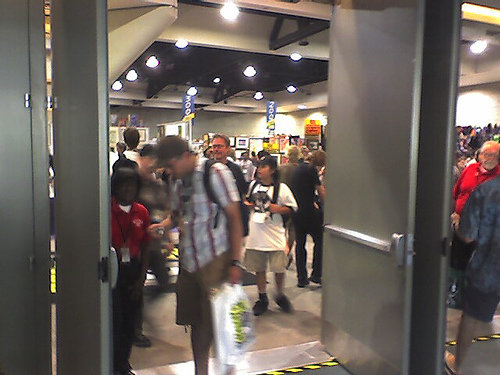
Heading into the convention center now. Why don’t you join me for some fun at Comic-Con?

One of the major differences bewteen Comicon and Anime Expo, other than the fact that the population of my Japanese home city is around me on the convention floor at the former, is the cosplay differences: there were not many costmes at all at SDCC, but 33-50% of the fans at AX were in costume.
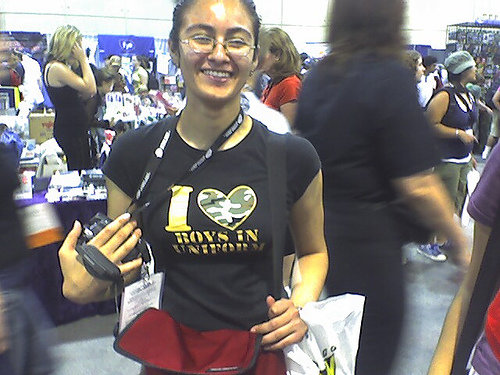
Lots of interesting T-shirts, yes. Since she likes the military uniforms, I gave her a catalog with our upcoming game.
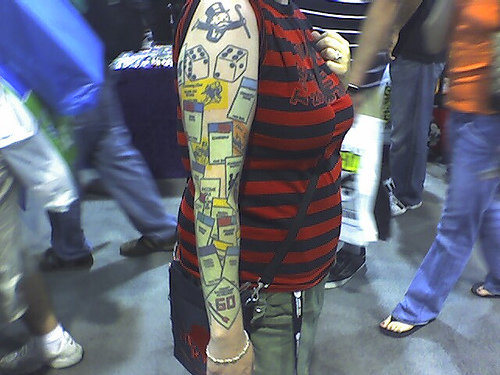
I always get culture shock at all the tattoos and face-piercings (in some cases, “harpoonings” is the only term to use), which of course they don’t do back in Japan too much. This woman had a Monopoly board on her arm — pretty cool.
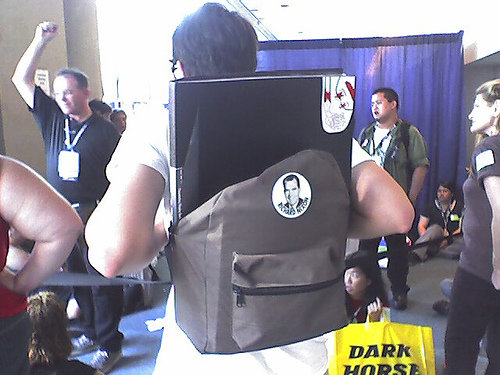
Nice button. Pretty wacky.
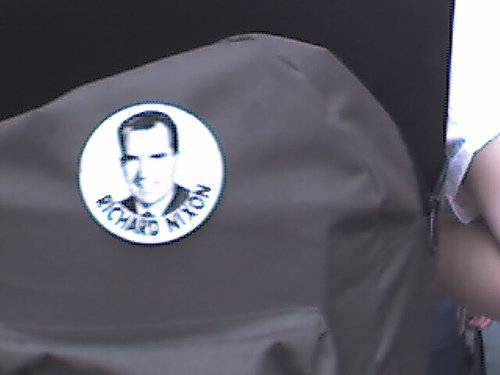
Close-up. Incidentally, I was using my Treo 650 that I bought for use in America (won’t work in Japan though, grrr), which isn’t as good in the camera-department as my normal camera.
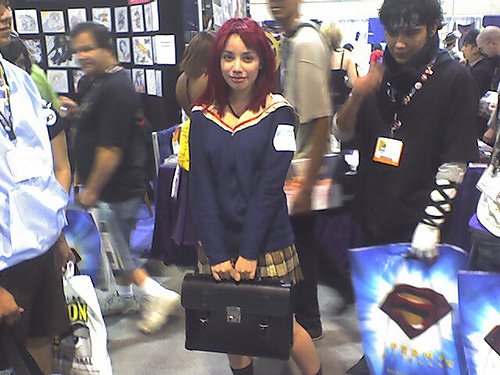
We had this girl in costume hold our school bag from Matsukameya, and it looked really good in her hands. We got a *ton* of interest in the school uniforms we sell.

This guy looks like he’s cosplaying Ray Bradbury cosplaying Mr. Spock.

Cool costume. He used a real flight helmet for the helmet part, too, for extra realism.
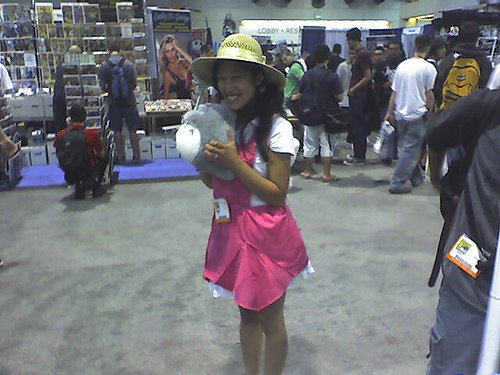
Another Mei. This one was cuter than the last one I took a picture of.








